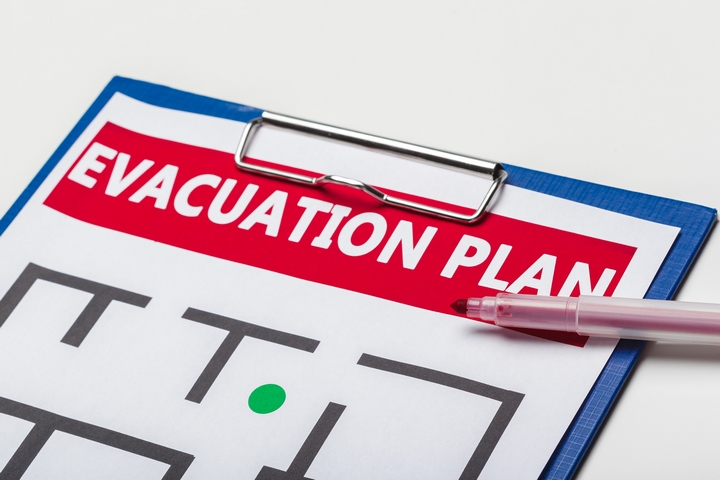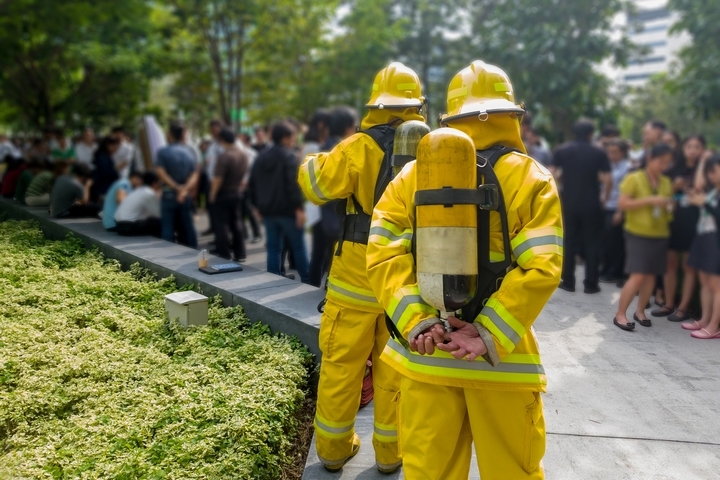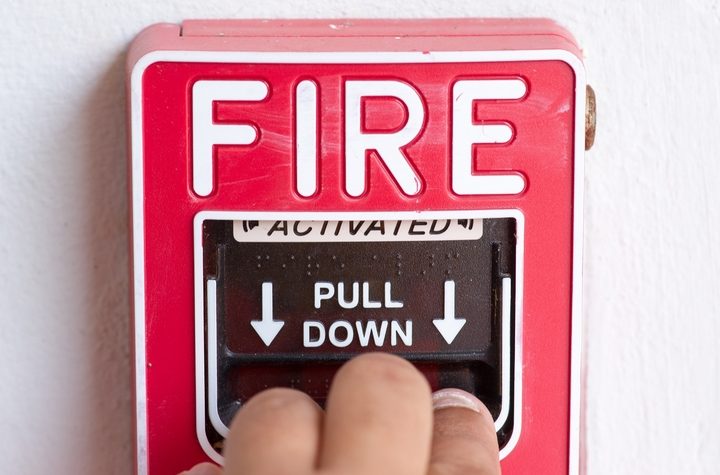A fire can break out anywhere, and it’s less risky to take steps to prevent a fire than to try to fight it while it’s burning. Fortunately, there are many things you can do to prevent fires from starting in your workplace.
These fire safety facts will help you keep your workplace and your colleagues safe. These fire safety facts will also help you figure out what to do if a fire breaks out despite your precautions.
Fact #1: You can prevent fires by eliminating fire hazards

Damaged electrical outlets and cords can be a fire hazard, and so can overloaded outlets. Flammable materials that are not stored properly, faulty gas lines, and dirty work areas can also be dangerous. Do what you can to eliminate fire hazards. Start by checking if the flammable materials can be replaced or substituted with heat resistant supplies instead.
Fact #2: Workplaces that are no-smoking zones are safer

Your workplace will be safer if you declare it a no-smoking zone. You should also have an ashtray outside your workplace for employees who want to smoke outside to extinguish their cigarettes properly instead of throwing them on the ground.
All businesses should have a fire evacuation plan. Depending on your type of working environment, different measures will need to be taken in the event of a fire. All businesses should have a fire prevention and control plan, or at least a detailed fire evacuation plan.
Fact #3: Fire exits should be free from obstacles at all times

This is one of the fire safety facts that can potentially save your life. Cluttered fire exits are not fire hazards, but if a fire does break out, they make it more difficult for employees to evacuate the building. You should make sure to keep all fire exits free from obstacles at all times.
Fact #4: Employers have the responsability to make sure their employees know what to do

Did you know that some buildings don’t even have any fire alarm systems? If your workplace doesn’t have any, you should get a fire alarm installed as soon as possible. Smoke detectors and sprinklers systems are also recommended.
Employers are responsible for creating their own fire safety plans, but they also need to make sure their employees are aware of those plans, and that they will know exactly how to react and what to do if a fire breaks out.
Fact #5: Employees should know how to activate fire alarms

Employees should know where their workplace’s fire alarm switches are, and they should also know how to activate them. It isn’t that complicated, but it’s best to know how they work in advance, than to try to figure it out when there’s an emergency.
In addition, employees should know where the closest exits are. Even when you have clear fire escape plans in your workplace, you should make sure employees can easily locate the two closest exits from their work stations. In the event of a fire, they might need to access the closest exit in the dark.
Fact #6: Smoke detectors and sprinklers should be tested regularly

Having smoke detectors and sprinklers systems is great, but you need to maintain them properly. Replace the batteries of your smoke detectors at least once a year, and test your detectors as well as your sprinklers systems once a month.
Fact #7: Posting clear fire escape plans on each level of the building is important

You might not see the necessity of posting fire escape plans on each level of the building you work in. But if someone not familiar with the building’s floor plan is inside while a fire breaks out, a fire escape plan could save their life.
Fact #8: The best way to implement a fire evacuation plan is to conduct fire emergency drills

Knowing what to do in case of a fire is great, but only a fire emergency drill can allow you to practice what you have to do. Conducting regular fire emergency drills is the best way to implement your fire evacuation plan, and to improve it if necessary.
Fact #9: People who haven’t been trained to use a fire extinguisher shouldn’t try to use one

Portable fire extinguishers can be useful to put out small fires, but there are many situations where they are useless. If you have not been trained to use the fire extinguishers available in your workplace, you shouldn’t try to use them.
Fact #10: Employees should stay calm if they need to evacuate the building

If you hear the fire alarm, or if you are the one to activate it, you need to evacuate the building as quickly as possible. Even if a fire seems very small, you should still call 9-1-1 to contact your city’s fire service. Even the smallest fire can spread rapidly, so it’s best not to take any chances.
However, you and your colleagues should stay calm, and follow your evacuation plan. Don’t run down the stairs, crawl on the floor if there is a lot of smoke, and close doors behind you if you are the last one to leave a room.




